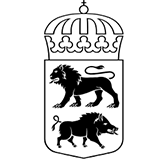The Royal Institute of Art (RIA) is a prestigious institution of higher education in the arts in Sweden, located in the capital, Stockholm. It focuses on providing high-quality fine arts education and research, and has trained many famous artists and designers. Here are some key information about the Royal Academy of Art:
Overview
Founded: 1735
Institutional nature: Public
Main campus location:
Stockholm, the main campus is located in Kungliga Konsthögskolan, a cultural district close to the city center.
History
The history of the Royal Academy of Art dates back to 1735, when it was founded by King Frederick I to train professional artists.
The Academy has undergone many reforms and developments in history, and has gradually become one of the most important centers for art education and research in Sweden and even in the Nordic region.
Throughout its long history, the Academy has trained many outstanding artists and has had a profound impact on the Swedish and international art world.
School Strength
Although the Royal Academy of Art is relatively small, it has about 200 students (including undergraduates, postgraduates and doctoral students) and a group of experienced faculty and staff.
Provide highly specialized and personalized education, focusing on students' creativity and personal development.
The school's research results have an important influence internationally, especially in contemporary art practice and theory.
Educational philosophy
Emphasize the combination of personal creative freedom and critical thinking, and encourage students to explore different forms of artistic expression and techniques.
Focus on interdisciplinary cooperation and promote communication and innovation between different art fields.
Provide rich practical opportunities, such as studio work, exhibition planning, international cooperation projects, etc.
Committed to cultivating professional artists with independent thinking ability and social responsibility.
Subject settings
Bachelor's degrees:
Fine Arts
Master's degrees:
Fine Arts
Art Theory
Master's programs in other related fields
Doctoral programs:
The Royal College of Art also offers doctoral programs to support in-depth art research and innovation.
Featured projects
Artist-in-Residence Program: Invite internationally renowned artists to visit and conduct short-term teaching or collaborative creation.
Exhibition space: The college has its own gallery and regularly holds student exhibitions and other art activities.
Research facilities: Provide advanced studio equipment and technical support, such as sculpture workshops, painting studios, printmaking studios, etc.
International cooperation: Actively participate in international exchange programs, such as Erasmus+, and establish partnerships with art institutions around the world.
International cooperation
The Royal Academy of Art has established partnerships with many top art schools in the world and participated in many international research networks and alliances.
Provide exchange student programs to promote students' international vision and cultural exchanges.
As a member of multiple international organizations, the Royal Academy of Art enjoys an important position worldwide.
Campus life and support services
Student support: Provide comprehensive student support services, including academic guidance, mental health support and career planning.
Campus facilities: With modern teaching buildings, libraries, studios and exhibition spaces, it provides students with a good learning and living environment.
Cultural activities: Regularly hold various cultural and social activities to enrich students' extracurricular life.
Uniqueness
Long-standing tradition: As one of the oldest art academies in Sweden, the Royal Academy of Art has a profound historical accumulation and cultural heritage.
Personalized education: Provide small class teaching and personal tutor system to ensure that every student can get full attention and support.
Strong industry connections: It maintains close cooperation with the Swedish and international art world, providing students with abundant internship and employment opportunities.
International atmosphere: It attracts students and scholars from all over the world, forming a unique multicultural learning environment.
Cost
For EU/EEA students, the Royal Academy of Art is usually free, but a small registration fee is required.
For non-EU/EEA international students, tuition fees vary according to the major, and specific fees should be consulted directly with the school or visit its official website for the latest information.
In terms of living costs, the cost of living in Stockholm is relatively high, but you still need to consider the cost of accommodation, food and personal expenses.
Application requirements
Applicants are usually required to submit a portfolio and may be required to attend an interview or audition to demonstrate their artistic talent and creative potential.
For master's programs, a bachelor's degree in a related field is usually required.
The English proficiency requirement is usually B2 level (according to the Common European Framework of Reference for Languages CEFR), and some majors may require higher levels.
-

Linnaeus University
-
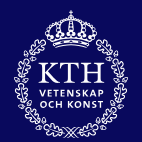
KTH Royal Institute of Technology
-

University of Gothenburg
-
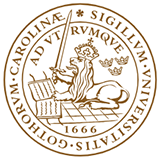
Lund University
-

Uppsala University
-
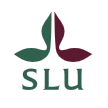
Swedish University of Agricultural Sciences
-

Halmstad University
-
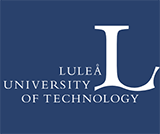
Luleå University of Technology
-
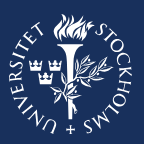
Stockholm University
-
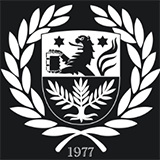
University of Skövde
-

Mesoamerican University
-

Istmo University
-

Mariano Galvez University of Guatemala
-

Regional University of Guatemala
-

Galileo University
-

Francisco Marroquín University
-

Rafael Landívar University
-

University of the Valley of Guatemala
-

University of San Carlos of Guatemala
-

Technological Institute of Tlaxcala Plateau
-

Golfo University
-

Technological University of South Sonora
-

Technological University of Huejotzingo
-

Tizimín Institute of Technology
-

Chilpancingo Institute of Technology

